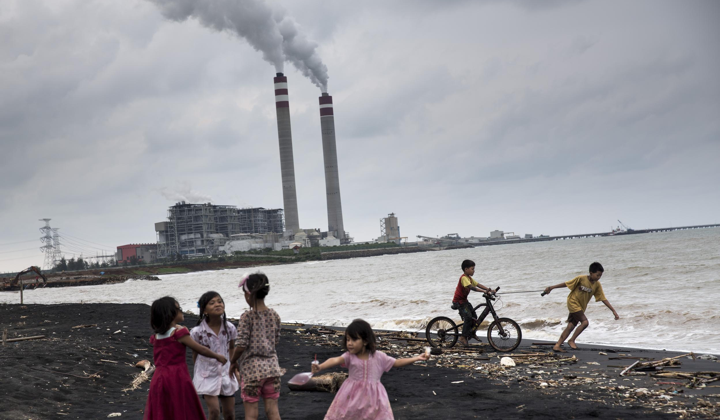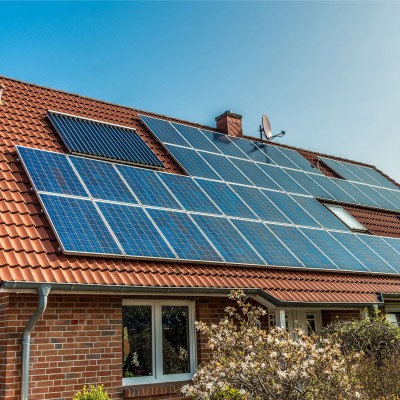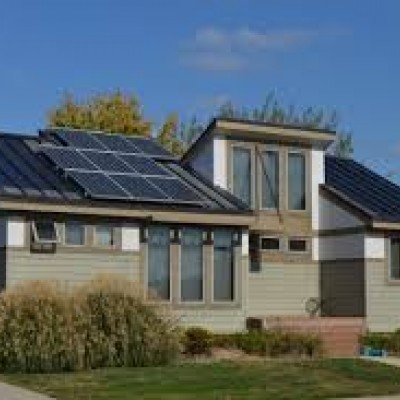The Energy Revolution: Budgeting Carbon for the Climate

Climate change requires urgent action. According to the Intergovernmental Panel on Climate Change (IPCC), the planet has a carbon budget of 1,000 gigatonnes (Gt) of CO2 starting from now. If we want to avoid the worst impacts of climate change, we have to stay within this budget. However, our entire carbon budget will be used up by 2040 at current emission rates. To stop that from happening, we need to get fossil fuels out of the energy sector as fast as possible.
Globally, the energy sector is responsible for two-thirds of greenhouse gas emissions. That's because we rely heavily on fossil fuels to keep the lights on, drive our cars, heat our homes, and power our industries. For example, fossil fuels provide more than 80 percent of energy In the United States.
Burning fossil fuels is a nasty business. It not only damages the climate, but also inflicts a range of harms on the environment and human health. The estimated cost of these impacts is staggering -- more than $2 trillion per year. Fortunately, renewable energy can take the place of fossil fuels and meet 100 percent of our energy needs by 2050.
The IPCC recently confirmed, for example, that the technical potential for renewable energy is much higher than global energy demand. Greenpeace has also produced its own scenario, showing how we can transition to renewable energy completely by 2050. The Greenpeace scenario stays well within our carbon budget, using only 667 Gt of our carbon budget between now and 2050, whereas business-as-usual would result in the emission of 1,400 Gt of CO2 in the same timeframe.
Achieving a 100 percent renewable energy future requires an energy revolution, a fundamental shift in the way we generate and use energy. This means moving away from large-scale centralized power plants to a more distributed energy system, where communities and individuals are empowered to produce their own energy and reap the benefits of locally-produced renewable power. It also means using the energy we produce more efficiently; electrifying a significant portion of our heating and transportation demand, building smart grids, microgrids and nanogrids; reforming utility business models and electricity ratemaking; and deploying energy storage.
Fortunately, the energy revolution is already underway. Renewable energy has already become widespread in many countries, with costs have fallen dramatically in recent years. In fact, renewable energy is already cheaper than fossil fuels in some parts of the world. Many countries, such as Denmark, but also communities, regions, and megacities are committed to making a 100 percent renewable energy a reality. This year, Hawaii became the first state in the US to set a 100 percent target.
The shift to renewable energy is already having a noticeable impact on global greenhouse gas emissions. In 2014, emissions from the energy sector stalled at 32 Gt of CO2, despite economic growth, for the first time in 40 years. While this is tremendous news, we need to reduce emissions faster than we are now.
Even if there are no technical or economic barriers to achieving a 100 percent renewable energy world, political will is often lacking. Governments across the world remain wedded to fossil fuels while many utility, oil, coal, and gas companies are doing everything they can to delay the shift to clean energy. This month, world leaders are gathering in Paris for the U.N. Climate Conference. Greenpeace is calling on them to craft a binding agreement that signals the end of the fossil fuel era and a shift to a 100 percent renewable energy supply by mid-century.
As important as it is to think globally on the climate issue, it's just as important to act locally. There are many ways for individuals and communities to make the energy revolution a reality. For individuals, measures include putting solar panels on your roof or participating in community shared grid, insulating buildings, replacing lighting bulbs, buying an electric vehicle, or replacing an old boiler with an air source heat pump.
Communities can do even more with things like community aggregation, bike and car sharing programs, streamlining permitting processes for renewable energy projects, and property tax abatements for locally installed renewable power.
Finally, as the benefits of a 100 percent renewable energy world go well beyond a safe climate there's no reason not to act. These benefits include more jobs, cleaner air, a more stable grid, healthier communities, lower taxes, more local investment and lower energy costs.
Let's make it happen!


